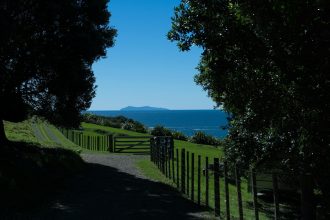field-science-exploration
Uncovering Life: A Field Science Adventure
Ever wondered what microscopic wonders are thriving right under our noses, even in seemingly simple environments? Embarking on a field science exploration can reveal a hidden universe teeming with life. This guide will walk you through the exciting process of collecting and examining samples from nature to discover the fascinating microorganisms that call them home.
Your Pocket Microscope: Bringing the Microscopic World to Light
The thrill of discovery doesn’t require a state-of-the-art laboratory. With a few basic tools and a curious mind, you can conduct your own field science investigations. We’ll cover everything from ethically collecting your specimens to preparing them for observation, making this a rewarding experience for budding naturalists and seasoned scientists alike.
Gathering Your Expedition Gear
Before you head out, ensure you have the essentials for a successful field science outing. These items will help you collect samples responsibly and prepare for your microscopic journey.
- Clean collection containers (small jars or bags)
- Tweezers or a small scoop
- Gloves (optional, but recommended for hygiene)
- A notebook and pen for observations
- A magnifying glass (for initial observations)
- A portable microscope (if available)
The Art of Specimen Collection: Finding Your Microscopic Subjects
The natural world is an abundant source of microbial life. From damp soil to the bark of trees, countless organisms await discovery. Remember to collect responsibly, taking only what you need and ensuring minimal impact on the environment.
Where to Look for Microscopic Life
Certain environments are particularly rich in microbial diversity. Exploring these areas will increase your chances of finding interesting specimens for your field science exploration.
- Moss and Lichen: These often-overlooked organisms create microhabitats perfect for tiny creatures. Gently scrape a small sample into your container.
- Soil Samples: Dig a small amount of soil from a garden bed or forest floor. Look for areas that are moist and rich in organic matter.
- Pond Water: A drop of water from a stagnant pond can reveal a bustling community of protozoa and algae.
- Tree Bark: The rough surfaces of trees can host a variety of fungi and bacteria.
Observing Your Discoveries: A Glimpse into the Unseen
Once you have your samples, the real adventure begins! Even without a high-powered microscope, a good magnifying glass can reveal some fascinating details. If you have access to a microscope, the possibilities expand exponentially.
Preparing Your Samples for Viewing
For soil and moss samples, it’s often helpful to add a small amount of clean water to create a slurry. This allows microorganisms to move freely and makes them easier to observe. For pond water, simply place a drop onto a clean slide.
What to Look For
Keep an eye out for movement, different shapes, and colors. You might see:
- Protozoa: Single-celled organisms that move actively.
- Algae: Plant-like microorganisms, often green or brown.
- Fungi: Including yeasts and molds.
- Bacteria: Too small for most hand lenses, but their presence can be inferred by the overall health of the sample.
The Importance of Field Science Exploration
Engaging in field science is more than just a hobby; it’s a way to connect with the natural world and foster a deeper understanding of ecological processes. Learning about the microorganisms around us helps us appreciate the complexity of life and the interconnectedness of ecosystems. For more on the importance of biodiversity, check out the IUCN’s definition of biodiversity.
This hands-on approach to learning is invaluable. It encourages critical thinking, observation skills, and a lifelong appreciation for scientific inquiry. Exploring the microscopic world right outside your door is a testament to the incredible diversity of life on Earth. For tips on responsible nature exploration, consider resources from organizations like National Geographic on conservation.
Conclusion: Your Next Scientific Expedition Awaits
Your field science adventure doesn’t need to end here. The world is full of microscopic marvels waiting to be discovered. Continue exploring, collecting, and observing to deepen your understanding of the natural world. What will you find on your next expedition?
Ready to start your own field science exploration? Share your discoveries in the comments below!
© 2025 thebossmind.com



